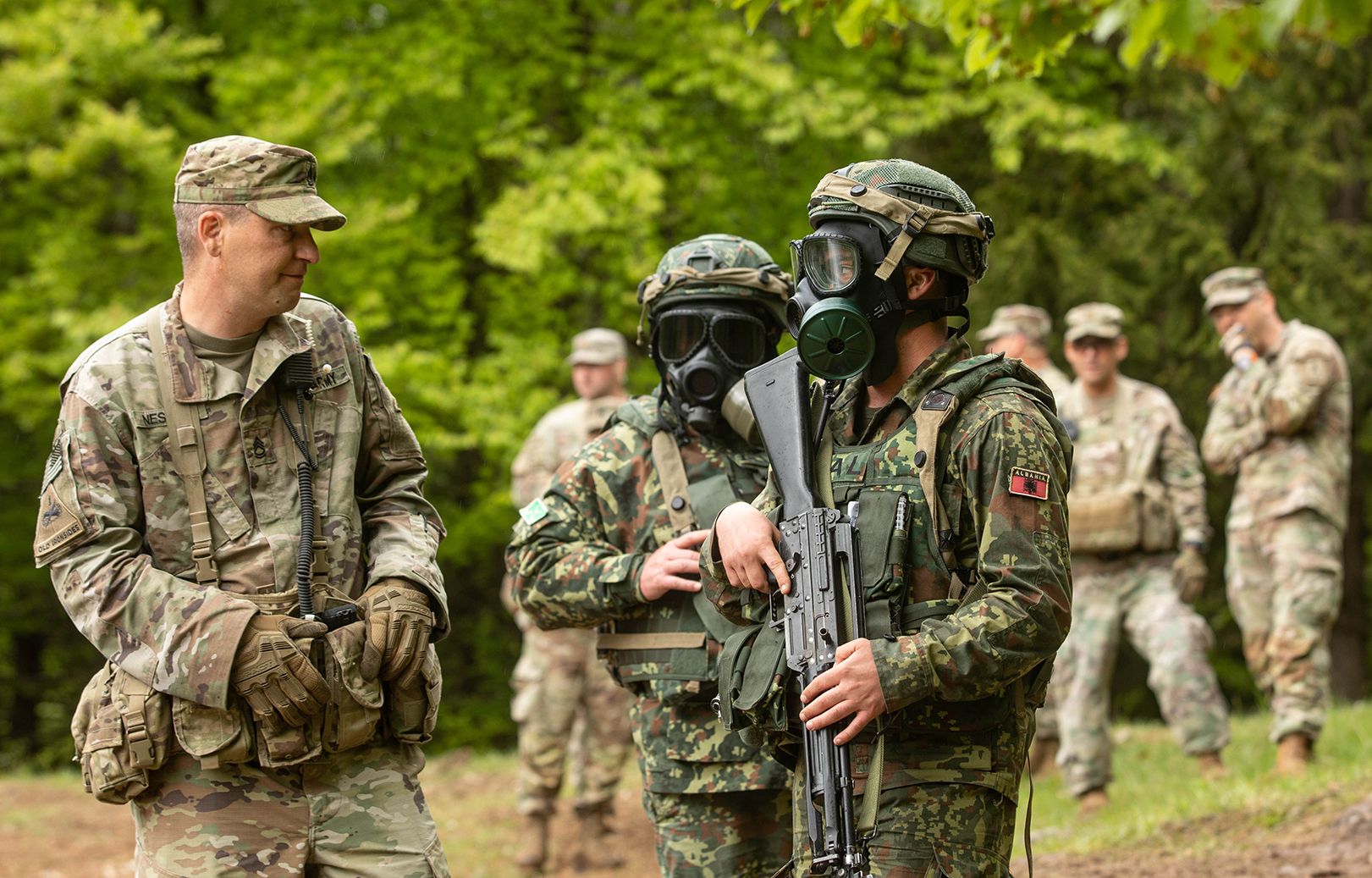by Major Eric Hurtado
The strength of our force is derived from the people placed into our ranks, and that strength is extended through the partner nations with which the U.S. Army regularly operates. Our partnerships in the Pacific and throughout Europe continue to become stronger. We share with one another and, together, find ways to improve our methods. I’ve seen how our alliances have provided various opportunities for us to observe and interact with other nations’ chemical, biological, radiological, and nuclear (CBRN) operations.
I have participated in multiple multinational exercises and would like to share some relevant topics and present a way forward for other CBRN leaders.
Historical Partnerships
Yama Sakura, an annual exercise with the Japan Ground Self-Defense Force, is the largest U.S.-Japan bilateral and joint command post exercise. A joint task force is established and aligned with the ground component command to repel an invasion of Askari forces in defense of the sovereign nation of Japan.
Every CBRN leader is aware of a possible North Korean invasion of South Korea; that scenario highlights the relevance of CBRN units in supporting the maneuver fight.
Cobra Gold is an annual multinational military exercise held in Thailand. The exercise brings eight nations together as a combined multinational staff to defend the fictitious sovereign nation of Tierra del Oro against an invading force from the fictitious nation of Sonora, which is disputing territorial alignments. The combined multinational staff then plans options for conducting forcible-entry operations, decisive operations, space operations, and defensive cyber operations in a dynamic information operations
environment.
Talisman Saber is a biannual bilateral exercise with Australia that began in 2005. This exercise shapes the environment such that a joint task force repels an invading force. The joint task force focuses on crisis planning and contingency response, enhancing the military capabilities of both nations within the Asia-Pacific region. Employing all capabilities of the joint force adds a layer of complexity when the live events occurring in Townsville Training Area, northern Queensland, are aligned with the joint task force headquarters at Gallipoli Barracks, southern Queensland.
Working with our North Atlantic Treaty Organization partners allows our Army to integrate its capabilities in a familiar scenario. In the decisive-action training environment scenario, Donovia (a fictitious country) has invaded sovereign nations and the North Atlantic Treaty Organization invokes Article 5 of the treaty, which launches forces into large-scale combat operations.1 Using joint and multinational assets ensures that each enabler brings its full force of capabilities to defeat and deter any further aggression by Donovia.
CBRN Role in Large-Scale Combat Operations
CBRN capabilities allocated for each exercise are commensurate with the CBRN response to the threat level for each theater of operation. While a CBRN threat is unlikely in some countries, significant threats are possible in others. The CBRN tactics, techniques, and procedures that we have established with some of our allied partners are unmatched and can be integrated, synchronized, and employed in CBRN formations in-theater without hesitation.
As we transition to the Joint Multinational Readiness Center (JMRC), Hohenfels, Germany, where the capacities of our partners are different, we encounter some limiting factors. The time allotted to integrate and place formations into the fight is reduced. Some allied divisions require extra time to understand the specifics of the CBRN forces participating in the exercise. The U.S. Army relies heavily on its multinational partners to fill the CBRN capabilities gap when CBRN formations are required during rotations.

A U.S. Soldier provides aid to a simulated casualty during an exercise at JMRC.
Multidomain and Multifaceted Officers
CBRN officers remain the Army’s most agile and adaptable leaders in the formation. Covering various additional duties and branch-immaterial billets and commanding multiple formations, they must be knowledgeable about every warfighting function and must be experts in their branch. Multidomain operations present an opportunity for G-34 (protection cells) to get involved in managing warfighting functions. Allocation requests are considered by the decision board, and the refined analysis and course of action are presented to the commanding general. The staff must conduct mission analysis ahead of time through the military decision-making process. A division commander needs ample time to weigh risks and
make decisions.

Allied soldiers speak to a U.S. Army observer during a simulated gas
attack at a JMRC exercise.
Global Modernization
Our modernized CBRN capabilities need to be employed in JMRC exercises. One course of action for integrating CBRN considerations into staff planning involves CBRN staff officers advocating in the correct forums. As leaders, we accomplish this by becoming experts in risk management and leading that process for the staff. We utilize our staff positions to inform the commander and leadership. While serving with the I Corps staff, the chief of the CBRN Section developed an enhanced version of the risk management tool for the commander to consider for use. This product created the opportunity for additional touchpoints with staff planners and guided the conversation toward potential CBRN needs. The I Corps protection cell
improved the Mission Command Training Program product key decision points, concentrating on the most critical hazard for the force. The I Corps CBRN Section then determined if the risk would be avoided, eliminated, or mitigated. Next, the CBRN Section created an overlay consisting of the G-35 (future
operations) 6-day concept sketch that outlined the battlefield ourselves into the conversations of senior leaders, develop trust, and guide discussions in such a way that our expertise can be exploited.
Endnotes:
1“Collective Defence and Article 5,” North Atlantic Treaty Organization, 4 July 2023, <https://www.nato.int/cps/en/natohq/topics_110496.htm>, accessed on 16 February 2024.
2Vlasta Molak, ed., Fundamentals of Risk Analysis and Risk Management, CRC Press, 1997.
Major Hurtado was the deputy CBRN officer for Headquarters, I Corps, and later transferred to JMRC.
He holds a bachelor’s degree in biological science from the University of Alaska, Fairbanks,
and a master’s degree in environmental management from Webster University.




